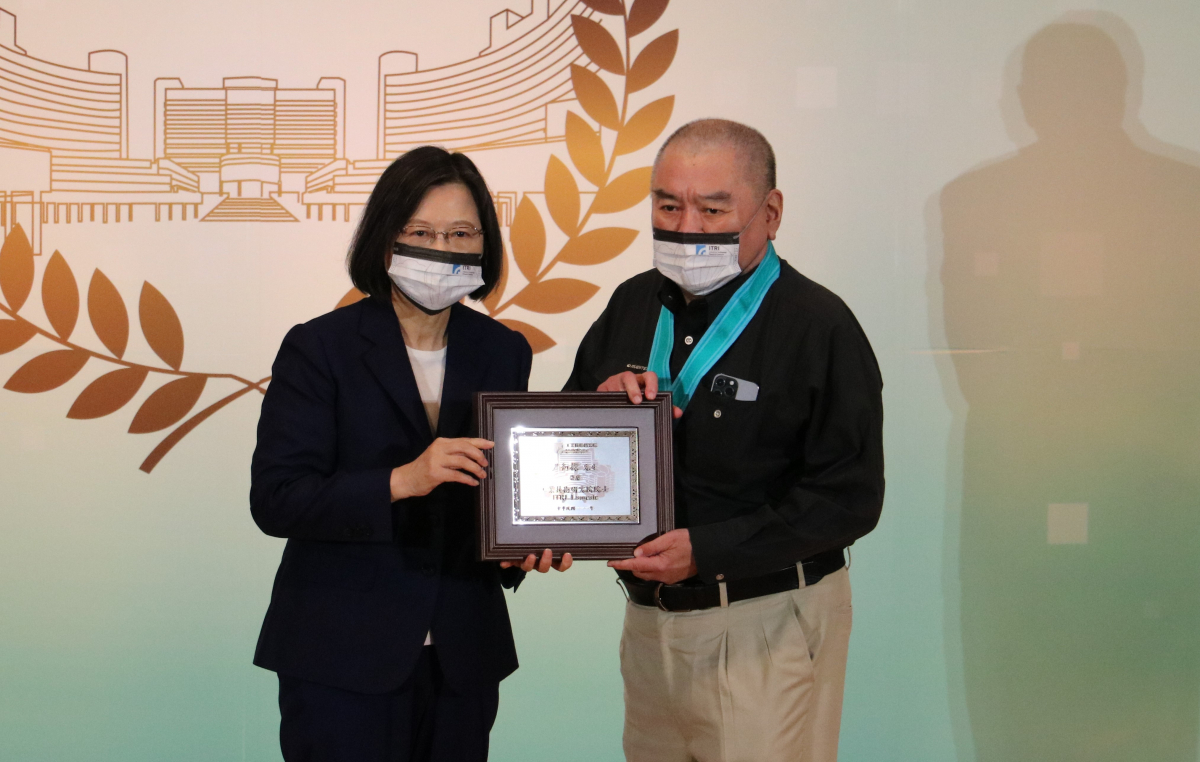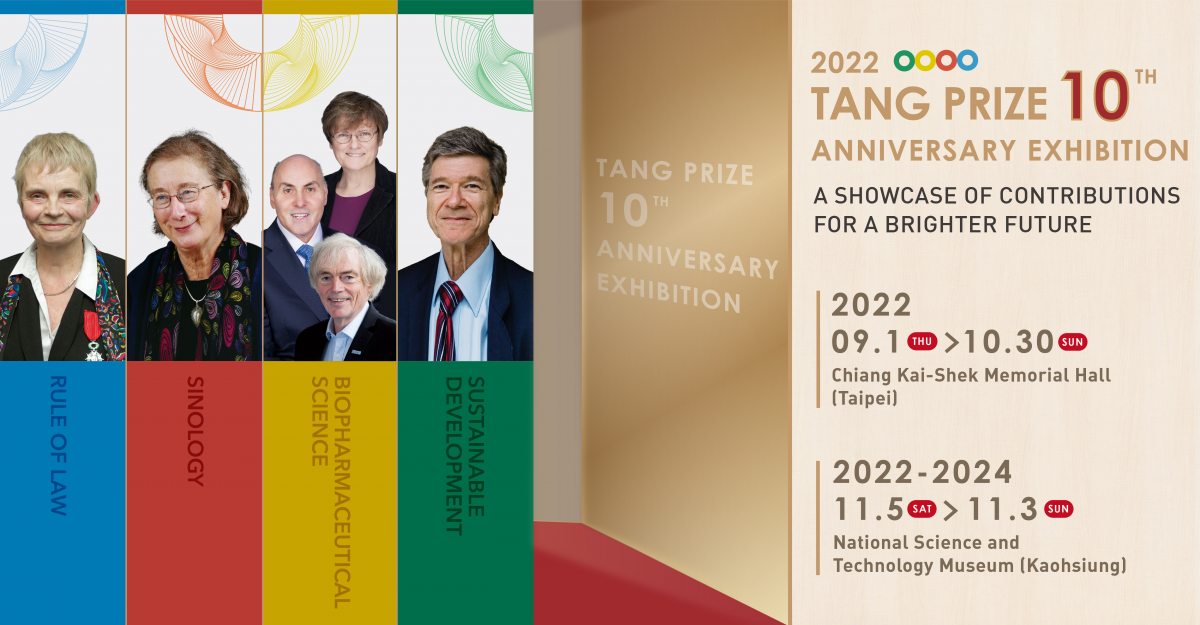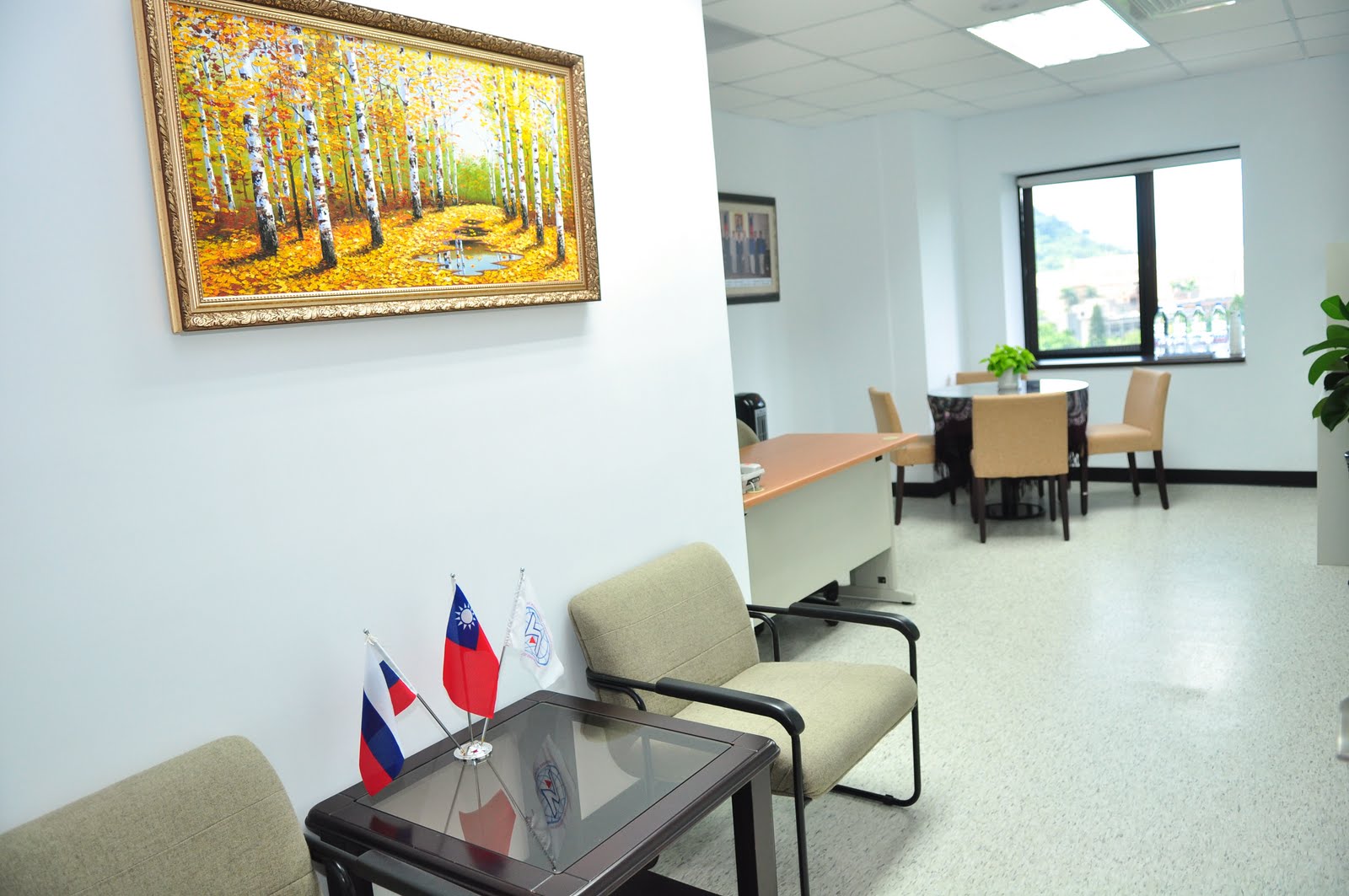|
Welcome to Taiwan Chapter of International Academy of Engineering
|
Congratulations to the newly elected full members and corresponding members! |
 |
 |
 |
|
Written by Administrator
|
|
Tuesday, 29 November 2022 17:14 |
|
The International Academy of Engineering (IAE) general assembly took place online in Moscow on November 24th, 2022. What was also on the agenda of the assembly was selecting the 2022 members for the academy. After careful assessment of the qualifications of the nominees, the IAE announced 12 new academicians (download) and 13 new corresponding members (download) from various countries, including the nominees, recommended by the Taiwan Chapter of the International Academy of Engineering (IAE). Congratulations to our members!
Full Members
Gwo-Bin Lee (Chair Professor of the Institute of Biomedical Engineering, the Department of Power Mechanical Engineering, National Tsing Hua University)
Shyh-Jiann Hwang (Distinguished Professor of the Department of Civil Engineering, National Taiwan University)
Corresponding Members
Chien-Chin Ma (Distinguished Professor of the Department of Mechanical Engineering, National Taiwan University)
Jenn-Shin Hwang (Distinguished Professor of the Department of Civil and Construction Engineering, National Taiwan University of Science and Technology)
Congratulations to them! |
|
Last Updated on Tuesday, 29 November 2022 17:33 |
|
|
Founder of Tang Prize Samuel Yin Elected Laureate of ITRI |
 |
 |
 |
|
Written by Administrator
|
|
Tuesday, 15 November 2022 11:16 |
|

Taiwan’s Industrial Technology Research Institute (ITRT) announced on November 11 that Chairman of the Ruentex Group and founder of the Tang Prize Dr. Samuel Yin was elected laureate of the ITRT. President Ing-wen Tsai attended the award ceremony and presented the ITRT laureate diploma to Dr. Yin. In his acceptance speech, Dr. Yin mentioned that though the Ruentex Group has a diverse range of business investments, construction is the one that interests him the most. It has been his lifelong endeavor to upgrade Taiwan’s construction sector from a traditional industry to a high-technology one. He also noted that the ITRT is the most important international research institute in Taiwan devoted to the study of industrial application. Therefore, he felt immensely honored to become one of its fellows. But this honor comes with a sense of responsibility that will urge him to keep pushing important agendas on sustainable development, energy savings and reduction of carbon emissions, so as to further improve the wellbeing of all humanity.
When making her opening remarks, President Tsai praised Dr. Yin for not only playing a key role in the transformation of the business model of the Ruentex Group but also being one of the trailblazers in Taiwan’s precision engineering industry. The construction methods he pioneered have helped reduce construction time, lower costs, create a more manageable construction schedule, and make buildings stronger and safer. The factories of many of Taiwan’s technology companies were built using precast concrete automation technology, a construction process that reflects the active involvement of Dr. Yin and his team during these construction processes as well as the significant contributions they have made. They have enabled Taiwan’s high-tech industry to quickly meet market needs and successfully seize market opportunities worldwide.
Chairman of the ITRT Chih-kung Lee reminded those present at the ceremony that although Dr. Yin’s background is in the humanities, he not only became the first adjunct professor in the Department of Civil Engineering of the National Taiwan University but is also the inventor of the rebar processing automation technology employed in Taiwan and abroad, and currently holds hundreds of patents. He is, undoubtedly, one of the high-flying multi-hyphenates.
An eligible ITRT fellow has to have “practical experience in industrial management or research and technological development; outstanding achievements in technological innovation and industrialization; and significant contributions to the country’s industrial development as well as the wellbeing of its citizens.” Dr. Yin is one of the few entrepreneurs who excel in both industrial management and technology R&D. He is also the first person in Taiwan’s construction industry to be named laureate of the ITRT.
Dr. Yin is the chairman, chief engineer and director of the R&D department of the Ruentex Group. His tasks include taking on challenging tasks, bringing about a constant flow of innovations and breakthroughs, coordinating the efforts of different teams in actual construction work, ensuring that buildings are built faster, better, and more seismically resistant, and bringing creative drives to the world of civil & construction engineering. Moreover, he has always been happy to release to the public the 21 patents on construction-related inventions he has obtained, including a technique known as “continuously wound rectangular ties”.” With his inventions being incorporated into more and more high-quality construction projects nowadays, Dr. Yin has been able to share his knowledge in a way that can benefit society as a whole, and it has turned out to be a very rewarding experience for him. Besides, it gives him a great sense of satisfaction when he can provide customers with excellent services, promote the welfare of people around the globe, help Taiwan’s high-technology sector build factories and facilities quicker and better so as to ensure its leading position in the sector.
Having spent much of his life on technological innovation, Dr. Yin has seen more than 650 of his inventions patented in 19 countries and regions, including in Taiwan, China, America, Japan, Britain and the European Union.
Renowned and respected all over the world for his expertise in civil engineering, Dr. Yin has won numerous academic honors, including the Henry L. Michel Award for Industry Advancement of Research from American Society of Civil Engineers; Life Achievement Award for Professionals from the Chinese American Academic and Professional Society; the Engineering Prowess Award from the Russian Academy of Engineering; the Public Works Medal for Professionals from the Public Construction Commission of Taiwan’s Executive Yuan; first gold medal of the National Invention and Creation Award in the construction field from Taiwan's Ministry of Economics; and the Outstanding Entrepreneur Chair Honor from the College of Engineering of National Taiwan University. He is also an elected academician of the Russian Academy of Engineering. In 2019, he received an honorary doctorate from the Siberian Branch of the Russian Academy of Sciences and was elected fellow of the US National Academy of Inventors in the same year. Seen in this light, the fellowship awarded by the ITRT is truly another honor well-deserved.
The ITRT also pointed out that apart from a distinguished career and enormous contributions to the engineering community, Dr. Yin is also lauded for his dedication to educational causes. He founded the Tang Prize with the aim of recognizing people who have influenced and made substantive contributions to the world. It has become a driving force behind the advancement of human civilization and sustainable development. 2022 marks the 10th anniversary of the Tang Prize. In this special year, Dr. Yin hopes the Tang Prize can continue to grow in importance and have increasingly greater impact on the way we think about sustainable development, in order to accomplish its mission of making the planet a better place to live. He also expects the Tang Prize to provide a platform for technological and cultural exchanges between Taiwan and the world. Thus, he encourages people of Chinese descent to work together to take on challenges facing humanity and strive to be an invaluable part of the international community. |
|
Last Updated on Tuesday, 15 November 2022 11:54 |
|
2022 Tang Prize Masters’ Forum Series Closes at National Tsing Hua University on Sep. 28 |
 |
 |
 |
|
Written by Administrator
|
|
Friday, 30 September 2022 14:56 |
|

The 2022 Tang Prize Forum series, with five sessions taking place from 19 to 28 September, were held on-site at National Taiwan University, Taipei Medical University, National Cheng Kung University, and National Tsing Hua University respectively while livestreamed on the Tang Prize YouTube channel. Joining the forums are recipients of the 2022 Tang Prize who earned international esteem for their groundbreaking research that examines the development of civilization and finds solutions to problems facing the 21st century. In addition, leading scholars and representatives of civil groups in Taiwan took part in the panel discussions where the exchange of different views kindled a spark of inspiration among the audience. To watch the forum again, please visit our YouTube channel:
2022 Tang Prize Masters’ Forum Series
n Sustainable Development: Sustainable Development Pathways Toward 2030 and Beyond
YouTube video: https://www.youtube.com/watch?v=mAAlSiyuC_k
n Biopharmaceutical Science (I): Using mRNA as Medicine
YouTube video: https://www.youtube.com/watch?v=qF-uFLbKTkQ
n Biopharmaceutical Science (II): Lipid Nanoparticles, Gene Therapy and the Covid-19 mRNA Vaccine
YouTube video: https://www.youtube.com/watch?v=LoK94h9QFIM&t=4s
n Sinology: Bronze, Jade and Gold: The Language of Objects and Their Contexts
YouTube video: https://www.youtube.com/watch?v=vU-1DfBPBNM
n Rule of Law: Public Participation in Constitutional Change: Reflections from a Comparative Perspective
YouTube video: https://www.youtube.com/watch?v=iZ5aqml-5Bc |
|
Last Updated on Friday, 30 September 2022 15:33 |
|
【Invitation】Join us on the "Tang Prize Masters' Forum in Sustainable Development" on Sept. 26 |
 |
 |
 |
|
Written by Administrator
|
|
Wednesday, 14 September 2022 17:43 |

Greetings from the Tang Prize Foundation,
Accelerating climate change and global warming provide the most convincing argument that to achieve sustainable development goals brooks no delay. 2022 Tang Prize laureate in Sustainable Development Professor Jeffrey Sachs is not only a world-renowned economist but also the director of the Center for Sustainable Development at Columbia University and the president of the UN Sustainable Development Solutions Network (SDSN). On September 26, at the forum staged at National Cheng Kung University, placed no.33 on the 2022 Times Higher Education Impact Rankings which assess universities against the UN’s Sustainable Development Goals, Professor Sachs will address the topic, “Sustainable Development Pathways toward 2030 and Beyond,” shedding light on how Taiwan and the rest of the world can realize net zero carbon emissions by 2050 amid various challenges including the pandemic and constant geopolitical conflicts. Ensuing his speech is a panel discussion where he and experts from Taiwan will talk about the breakthroughs Taiwan and other countries are capable of making even in the face of a dwindling window of time, in order to continue pushing forward the agenda for sustainable development in an age of uncertainty with methods such as adopting effective regulations and strengthening international cooperation.
 Date:9/26 (Mon) Date:9/26 (Mon)
 Time:14:00-16:00 (GMT+8, Taiwan) Time:14:00-16:00 (GMT+8, Taiwan)
 Venue:National Cheng Kung University Venue:National Cheng Kung University
 Topic:Sustainable Development Pathways Toward 2030 and Beyond Topic:Sustainable Development Pathways Toward 2030 and Beyond
 Watch live:https://youtu.be/mAAlSiyuC_k Watch live:https://youtu.be/mAAlSiyuC_k
*To engage audiences around the world, this forum will be livestreamed on the Foundation’s official YouTube. Please share this exciting news with your family, friends and colleagues. We look forward to your virtual participation on September 26. To benefit our viewers, the recording of this forum will also be made available on our website afterwards.
--------------------------------------------------------
( 886-2-8772-5188|7 886-2-8772-7100
財團法人唐獎教育基金會 / 企劃處公關組
10492台北市中山區八德路二段308號2F
The Tang Prize Foundation / Media Team, Department of Planning and Development
2F, No.308, Sec. 2, Bade Rd, Taipei 10492, Taiwan
|
|
Tang Prize 10th Anniversary Exhibition |
 |
 |
 |
|
Written by Administrator
|
|
Thursday, 25 August 2022 15:07 |
|
To celebrate the 10th anniversary of Tang Prize, Tang Prize Foundation will hold " Tang Prize 10th Anniversary Exhibition" at Chiang Kai- Shek Memorial Hall in Taipei from September 1st to October 30th. The opening press conference will be held in the auditorium on September 1st. We sincerely invite everyone to come and share the glory of Tang Prize winners!
-----------------
This exhibition presents the contributions of Tang Prize winners to the public in an easy-to-understand way, and an interactive area that combines education with entertainment is designed for the whole family. Please feel free to visit the exhibition. https://youtu.be/VND79fd-izg

|
|
Last Updated on Friday, 26 August 2022 17:20 |
|
|
|
|
|
|
Page 4 of 14 |

分會會址:台北市大安區辛亥路三段188號7樓706室;電話:+886-2-81619999 分機7266;
傳真:+886-2-81619998;E-mail:tciae.org@gmail.com
Copyright © 2010 TCIAE. All Right Reserved.
|
|
Numbers Guests on Line
We have 14 guests online
Taiwan-Russia cooperation platform
Russian Learning Corner
|











